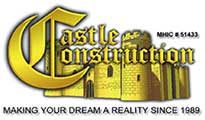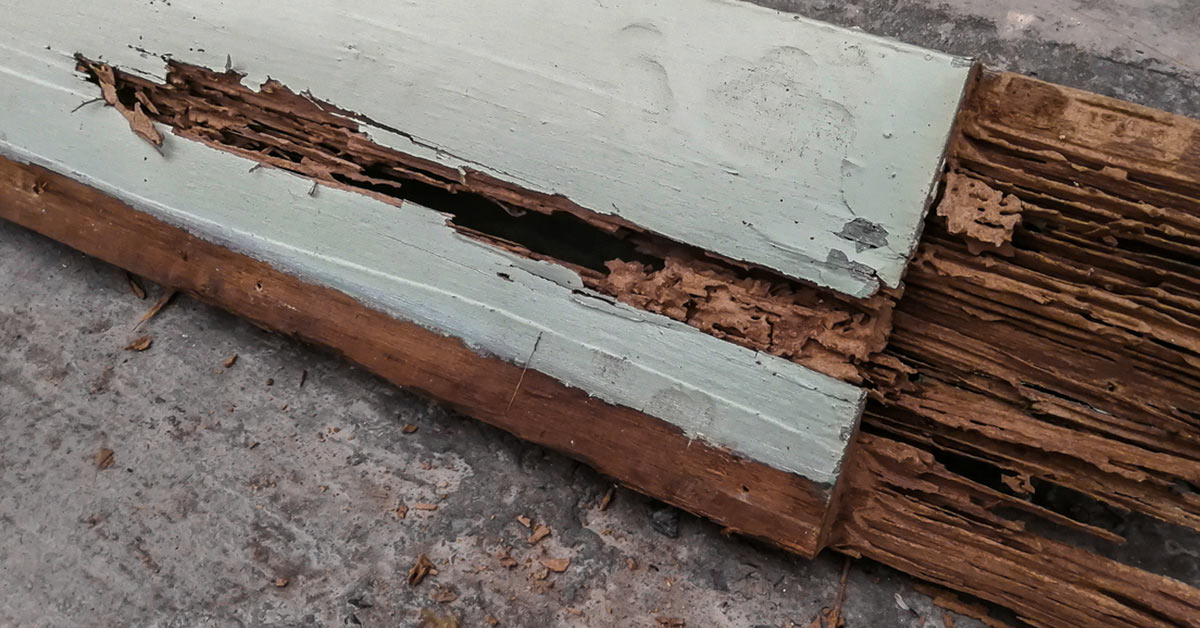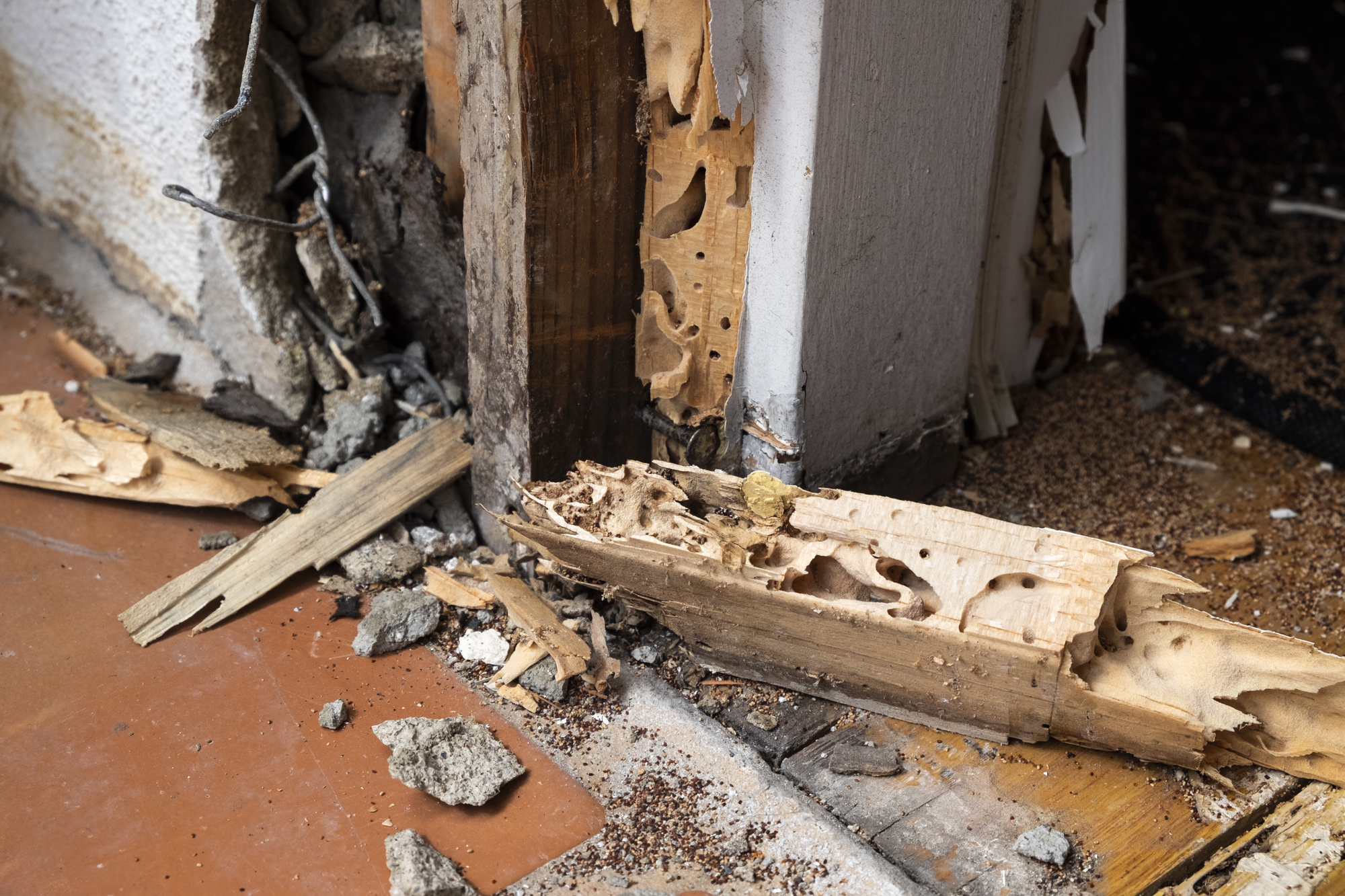Signs of home termite damage include hollow-sounding wood and visible maze-like patterns. Crumbling drywall and discarded wings near windowsills are also indicators. Homeowners dread the thought of termites silently causing havoc in the structure of their houses. These pests are notorious for their ability to chew through wood, wallpaper, and even flooring without immediate detection. Spotting the early signs of termite damage is crucial for preventing extensive and costly repairs.
What Are Termites?
Termites are small, wood-eating insects. They live in colonies. A colony can have millions of termites.
Three main types exist:
- Subterranean termites love to dwell below ground.
- Dry wood termites set up homes directly in wood.
- Formosan termites are aggressive and prolific.
These pests are masters of destruction. They cause billions in damage yearly. Termites never sleep. They eat wood 24/7. This behavior makes them a constant threat to homes. It’s vital to recognize their presence early.
Signs Of Termite Damage
Signs of termite damage can show in several ways. Your first clue might be visible damage to wood around your home. This could look like tiny holes or crumbling edges. You should also tap on wood surfaces. If they sound hollow, termites might be eating them from the inside.
Wood Damage
The core of termite destruction lies in their appetite for wood. Examining wooden structures for subtle damages such as hollowed or weakened wood can unveil the early stages of infestation.
Cracked Paint and Bubbling Wallpaper
Termites can lurk behind walls, leaving signs like cracked paint and bubbling wallpaper. These seemingly harmless indicators often mask the severe damage occurring beneath the surface.
Flooring Woes
Your flooring can reveal a lot about termite activity. If you notice sagging or hear hollow sounds when tapping on wood, termites may be at play beneath your feet.
Mud Tubes
Termites construct mud tubes to navigate safely. these tubes around your home, especially near the foundation, are a clear Home Termite Damage Sign.
Swarmer’s
Swarmer’s are mature termites with wings, indicating a well-established colony. Their sudden presence, especially indoors, should set off alarms.
Discarded Wings
Finding discarded wings around windowsills or corners shows swarmers shedding their wings. This often happens when they’ve found a new nesting spot.
Dangers Of Termite Damage
The presence of termites can seriously weaken a home’s structure. Wooden beams and supports become hollow and frail. This can lead to ceiling collapses or floor failures. A house with termite damage might not hold up well in storms.
Property value drops if termites damage a house. People often avoid buying such properties. Repairing termite damage can cost a lot. This is why regular inspections are important to catch signs early. Noticing mud tubes, wood debris, or hollow sounds in walls could save your home.
Inspection And Detection
Discovering termite damage at home requires keen observation.
- Hollow or papery wood surfaces often indicate termites.
- Mud tubes on exterior walls serve as a clear warning sign.
- Tight-fitting doors and hard-to-open windows can suggest termite presence.
Sawdust piles near wood structures are tell-tale signs of termites. Calling experts for a thorough inspection will confirm the infestation. Experts use advanced equipment to detect termites. They can spot hidden damage with their tools.
A regular DIY check around the home also helps. Listen for a hollow sound when tapping wood. Look out for discolored or drooping drywall. Check for small holes in the drywall. A powdery substance near woodwork is a red flag. Taking action quickly can save your home from further damage.
Preventing Termite Damage
Moisture fosters an ideal environment for termites. Keep your home dry and free from leaks. Fix dripping faucets and water pipes immediately. Ensure proper drainage around your home’s foundation. Install dehumidifiers in damp areas like basements. Regular cleaning of gutters and downspouts is crucial.
Schedule professional termite inspections yearly. Trained experts spot signs of termite activity early. They identify potential risk areas in your home. Regular checks are key in preventing termite damage. They save your home from costly repairs. Early detection leads to easier management of termite infestation. Trust professionals to safeguard your house against these pests.
Treating Termite Infestations
Termites can wreak havoc on your home without a sound warning. To combat these silent destroyers, various treatment options are available. Each method targets termites differently, ensuring your home gets the protection it needs.
Chemical treatments involve the use of liquid pesticides. Technicians apply these chemicals to the soil. This creates a barrier to killing termites. These treatments are very effective.
On the other hand, baiting systems work by attracting termites to a food source. Once termites eat the bait, they carry poison back to their colony. This method slowly reduces the termite population. wood treatments protect your home directly. Experts apply chemicals onto the wood. This stops termites from eating the wood in your house.
Repairing Termite Damage
To repair termite damage, it’s crucial to identify and replace termite-infested wood. Professional assessments determine the extent of the damage. Experts carefully remove damaged sections. They ensure only sound, healthy wood remains. This process prevents future termite attacks. Making sure every infested piece is gone is key.
Restoring structural integrity is the next step. The use of chemical treatments is common to safeguard the structure. Contractors may strengthen existing wood with supportive materials. This could involve adding new support beams or joist sisters. Such repairs help keep your home safe and sturdy. Precision and expertise are vital in this stage.
FAQs Of Home Termite Damage Sign
How Do I Know If My House Has Termite Damage?
Check for hollowed wood, mud tubes, discarded wings, and fecal pellets. Noticeable cracks on walls and sagging floors may indicate termite damage.
What Is The First Sign Of Termites?
The first sign of termites is often the presence of mud tubes or wood damage. Witnessing swarmer termites or discarded wings can also indicate an infestation.
What Does Termite Damage Look Like On Outside Of House?
Termite damage on a house’s exterior may present as discolored or drooping drywall, peeling paint, wood that sounds hollow when tapped, and maze-like designs beneath surfaces.
What Does New Termite Damage Look Like?
New termite damage appears as hollowed wood, mud tubes, pinhole-sized entry points, or wood surfaces blistering. Droppings resembling sawdust or coffee grounds often accompany these signs.


